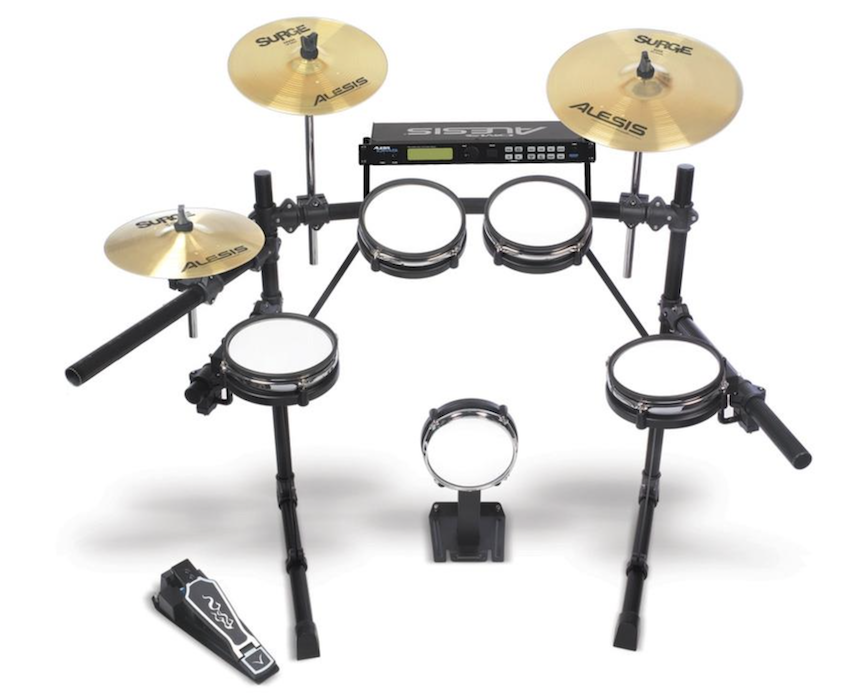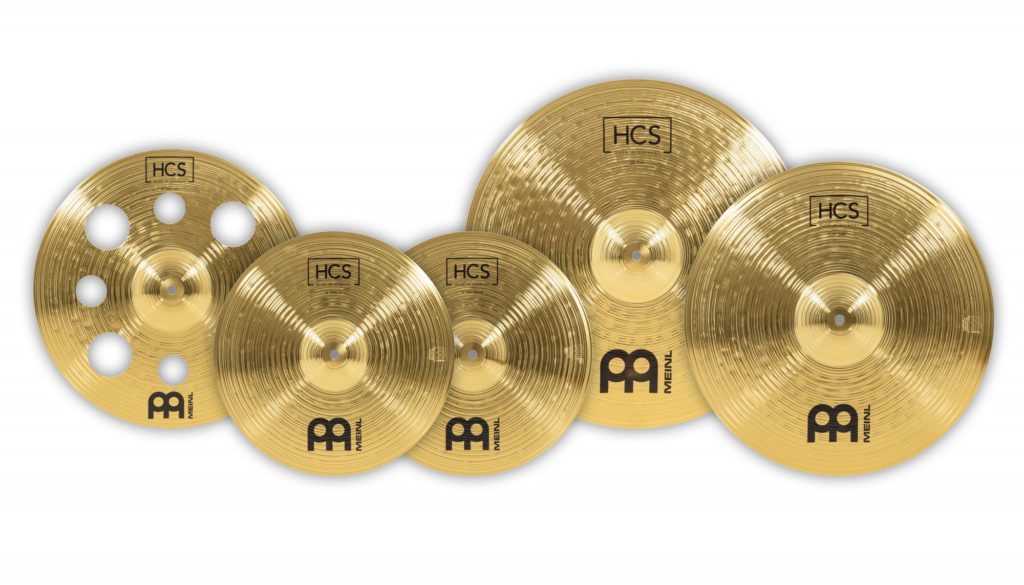Electronic Cymbals: A Guide to Choosing The Right Ones
Overview
In the ever-evolving landscape of electronic drums, electronic cymbals have improved in leaps and bounds, pushing the boundaries of sound and expanding the possibilities for drummers. This guide not only explores the distinctive realm of electronic cymbals but also provides valuable insights into the best ways to choose the right ones for your drumming needs.

Electronic Cymbals
At a Glance:
- Use Proper Technique
- Get a Practice Pad
- Warm Up
- Develop Weak Hand
- Practice with a Metronome
- Use Good Stick Control
- Use Dynamics
- Incorporate Interval training
- Relax
- Record Your Progress
” You are never going to completely reproduce an acoustic drum kit sound or feel but you can get pretty dam close. Spend the money as long as you are committed to the instrument.”
Ben G. Amazon Review.
The Evolution of Electronic Cymbals:
Traditional cymbals have long been the heartbeat of drum kits, adding depth, character, and complexity to the rhythmic canvas.
However, traditionally electronic cymbals have had a long way to go in being able to recreate these unique and distinct sounds, as well as the feel. As technology advanced, we have seen that gap being closed.
These cymbals, now equipped with state-of-the-art sensors and triggers, enable drummers to explore a vast array of sounds beyond the limitations of acoustic cymbals. From realistic reproductions of classic cymbals to entirely new and experimental tones, electronic cymbals open a sonic horizon for creative drummers.
However, traditionally electronic cymbals have had a long way to go in being able to recreate these unique and distinct sounds, as well as the feel. As technology advanced, we have seen that gap being closed.
These cymbals, now equipped with state-of-the-art sensors and triggers, enable drummers to explore a vast array of sounds beyond the limitations of acoustic cymbals. From realistic reproductions of classic cymbals to entirely new and experimental tones, electronic cymbals open a sonic horizon for creative drummers.
Choosing the Right Electronic Cymbals:
1. Sound Variety and Quality:
Opt for electronic cymbals that offer a diverse range of sounds and although this can primarily come from the drum module, some brand cymbals are not compatible with some brand modules.
Look for cymbals that are compatible with the module and therefore the sounds you are after.
Also keep in mind some cymbal pads have dual triggers, some just single triggers, and if you want to choke them, make sure they have this feature.
Opt for electronic cymbals that offer a diverse range of sounds and although this can primarily come from the drum module, some brand cymbals are not compatible with some brand modules.
Look for cymbals that are compatible with the module and therefore the sounds you are after.
Also keep in mind some cymbal pads have dual triggers, some just single triggers, and if you want to choke them, make sure they have this feature.

2. Compatibility with Drum Modules:
As mentioned, ensure that the electronic cymbals you choose are compatible with your drum module.
The synergy between cymbals and modules is crucial for a seamless and responsive performance.
3. Build and Durability:
Evaluate the build quality of electronic cymbals as they can vary quite significantly.
They should be sturdy enough to withstand regular playing in practice sessions and the demands of live performances, should you wish to use them.
This is another area where you find the more you spend the longer they will last.
4. Size and Feel:
Select electronic cymbals that match the size and feel of the acoustic cymbals you are accustomed to.
This ensures a more natural transition and a comfortable playing experience.
Pay attention to the responsiveness and sensitivity of the cymbals. The best ones mimic the dynamic range of acoustic cymbals, allowing for expressive playing.
As mentioned, ensure that the electronic cymbals you choose are compatible with your drum module.
The synergy between cymbals and modules is crucial for a seamless and responsive performance.
3. Build and Durability:
Evaluate the build quality of electronic cymbals as they can vary quite significantly.
They should be sturdy enough to withstand regular playing in practice sessions and the demands of live performances, should you wish to use them.
This is another area where you find the more you spend the longer they will last.
4. Size and Feel:
Select electronic cymbals that match the size and feel of the acoustic cymbals you are accustomed to.
This ensures a more natural transition and a comfortable playing experience.
Pay attention to the responsiveness and sensitivity of the cymbals. The best ones mimic the dynamic range of acoustic cymbals, allowing for expressive playing.
Subscribe to our Newsletter
Stay connected and receive the latest gear updates as well as exclusive offers.
5. Adjustability and Customisation:
Look for cymbals that offer adjustability in terms of sensitivity and triggering. This allows you to fine-tune the cymbals to your liking and playing style.
Consider models that provide customisation options, enabling you to explore different sounds and tailor the cymbals to suit various musical genres.
Dual-triggered cymbals, for example, can be set up to have a crash sound and also the bell can be set as a splash, or any other sound you like.
6. Budget Considerations:
This one is kinda obvious but you need to determine your budget for electronic cymbals and sometimes it can be more than the whole rest of the kit combined.
While there are high-end options with advanced features, there are also more budget-friendly choices that deliver excellent performance.
Strike a balance between your desired features and your budget to find cymbals that offer the best value for your investment.
Look for cymbals that offer adjustability in terms of sensitivity and triggering. This allows you to fine-tune the cymbals to your liking and playing style.
Consider models that provide customisation options, enabling you to explore different sounds and tailor the cymbals to suit various musical genres.
Dual-triggered cymbals, for example, can be set up to have a crash sound and also the bell can be set as a splash, or any other sound you like.
6. Budget Considerations:
This one is kinda obvious but you need to determine your budget for electronic cymbals and sometimes it can be more than the whole rest of the kit combined.
While there are high-end options with advanced features, there are also more budget-friendly choices that deliver excellent performance.
Strike a balance between your desired features and your budget to find cymbals that offer the best value for your investment.
7. Reviews and Recommendations:
Research and read reviews from other drummers who have experience with the electronic cymbals you are considering.
Real-world feedback can provide valuable insights into the performance and reliability of the cymbals.
8. Look For Second-Hand Bargains:
Although I recommend doing this and you can find some bargains, there are some risks involved.
When dealing with electronics issues can be harder to spot, so trigger issues or loose wiring can be a real problem.
Sometimes though it is worth the risk and you can save yourself some serious money and get very high-level cymbals at a low price.
Research and read reviews from other drummers who have experience with the electronic cymbals you are considering.
Real-world feedback can provide valuable insights into the performance and reliability of the cymbals.
8. Look For Second-Hand Bargains:
Although I recommend doing this and you can find some bargains, there are some risks involved.
When dealing with electronics issues can be harder to spot, so trigger issues or loose wiring can be a real problem.
Sometimes though it is worth the risk and you can save yourself some serious money and get very high-level cymbals at a low price.
Summary
Choosing the right electronic cymbals involves a careful consideration of factors such as sound quality, compatibility, durability, size, adjustability, and budget.
By navigating the diverse offerings in the market and aligning your preferences with the features of electronic cymbals, you can set yourself up with a fantastic practice kit at home (which we’re sure your neighbours will appreciate) and also perhaps a great-sounding live kit.
Whether you’re a live performer, studio drummer or just play for fun, getting the right electronic cymbals opens up a realm of creative possibilities, allowing you to sculpt your unique drumming identity and allows you to get that practice you need to advance your playing faster.
By navigating the diverse offerings in the market and aligning your preferences with the features of electronic cymbals, you can set yourself up with a fantastic practice kit at home (which we’re sure your neighbours will appreciate) and also perhaps a great-sounding live kit.
Whether you’re a live performer, studio drummer or just play for fun, getting the right electronic cymbals opens up a realm of creative possibilities, allowing you to sculpt your unique drumming identity and allows you to get that practice you need to advance your playing faster.

Q & A
How does an electronic cymbal work?
Whenever the cymbal pad is hit, the trigger or sensor inside, generates a small voltage spike that travels through the cable to the module.
The module produces the programmed sound corresponding to the impact on the cymbal pad.
If you have a dual trigger you can program different sound for different parts of the cymbal.
Q. What are electronic drum cymbals made of?
The cymbal pads are either discs made of different materials, often with rubber/silicone or even some metal, with a playing surface that rebounds simulating a similar feel to an acoustic drum set.
Each pad has one or more sensors that generates an electronic signal when struck.
Do professional drummers use electronic drums?
Yes they do. A lot of professional drummers use electronic drum kits for practice as they are a lot more practical in size and also controlling noise.
It is also not uncommon these days to see drummers incorporate electronic pads amongst their acoustic set for special effects such as bass sub drops or live effects.
What are the disadvantages of electronic drums?
Some common issues are:
-Misfiring or non-firing triggers.
-Electronic drum and cymbal pads are more likely to break.
-Hidden issues due to electronics.
-You generally need to buy the mid-top of the range kits for them to really feel and sound great.
-They can look odd in a traditional live setting.
Whenever the cymbal pad is hit, the trigger or sensor inside, generates a small voltage spike that travels through the cable to the module.
The module produces the programmed sound corresponding to the impact on the cymbal pad.
If you have a dual trigger you can program different sound for different parts of the cymbal.
Q. What are electronic drum cymbals made of?
The cymbal pads are either discs made of different materials, often with rubber/silicone or even some metal, with a playing surface that rebounds simulating a similar feel to an acoustic drum set.
Each pad has one or more sensors that generates an electronic signal when struck.
Do professional drummers use electronic drums?
Yes they do. A lot of professional drummers use electronic drum kits for practice as they are a lot more practical in size and also controlling noise.
It is also not uncommon these days to see drummers incorporate electronic pads amongst their acoustic set for special effects such as bass sub drops or live effects.
What are the disadvantages of electronic drums?
Some common issues are:
-Misfiring or non-firing triggers.
-Electronic drum and cymbal pads are more likely to break.
-Hidden issues due to electronics.
-You generally need to buy the mid-top of the range kits for them to really feel and sound great.
-They can look odd in a traditional live setting.
Did We Miss Something?
If there is something we have forgotten to mention, please contact us so we can continue to help and serve the wider drumming community.




